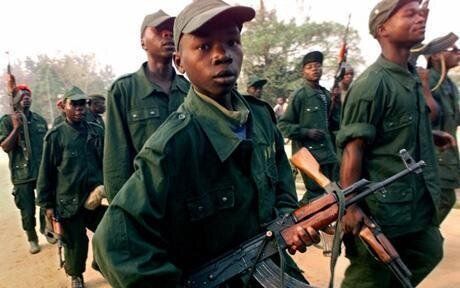
Wars usually end with talking. With the blood still fresh on the battlefield, politicians sit down at a negotiating table for peace talks. Words, after all, are their currency. Just as psychoanalysts apply a "talking cure" to resolve deep-seated conflicts, politicians sit across from each other to talk things out.
But what about soldiers? Their experience of war has more to do with action than with words. The traumas of wartime -- inflicted by and on soldiers -- are more of the sticks-and-stones variety. Yet the default approach to dealing with post-traumatic stress disorder (PTSD) is through words. The National Center for PTSD recommends sitting down with a trained professional for a course of cognitive, exposure, group, or family therapy. Talk, talk, and more talk.
It's not that talk is useless. Such therapy has helped many, many people. But soldiers are not out on the battlefield yelling epithets and absorbing verbal abuse. They're killing and brutalizing, and being shot at and brutalized in return. Can such traumas be healed through words alone?
Now imagine these horrific experiences, which are enough to push adults into catatonic states, being visited on children. Between 2004 and 2007, child soldiers fought in 19 countries or territories. Employed in various capacities -- scouts, prostitutes, mine sweepers -- they often begin to kill before they hit puberty. Nor does the tragedy end with the end of conflict. "Tens of thousands of child soldiers have been released from armies and armed groups since 2004 as long-running conflicts in sub-Saharan Africa have ended," according to Child Soldiers: Global Report 2008. Reintegrating those children back into war-torn societies is a monumental task.
Like ballet dancers, these young soldiers have been trained from an early age to go through precise motions, to shape their bodies to the required task. In this case, though, the task is to kill, not to pirouette.
So, can we address these traumas through words alone? David Alan Harris, a choreographer and therapist, has pioneered the use of dance and movement therapy with child soldiers. In his contribution this week to Foreign Policy In Focus (FPIF), Harris tells the riveting story of how young men in Sierra Leone, who show no outward emotion about their past atrocities, slowly come to terms with their experiences -- through dance.
"The first sign of empathy for a victim came during a group dramatization," Harris writes in Dancing with Child Soldiers. "A 17-year-old who had never before shown any emotions, even when speaking of horrific events, was cast by a peer in the role of a young mother with a baby at her breast. When another teen, acting the part of a rebel, ripped the infant away and murdered it, the face of the youth playing the mother contorted in utter agony. Following this courageous depiction of authentic horror, the sharing of long-suppressed emotions emerged."
The use of movement therapy releases pent-up emotions and body memories, provides a kind of counter-ritual to the ones imposed by the army, and promotes new bonding experiences for the former child soldiers. The arts, here, aren't supplemental or elective but an essential and integral part of the healing process. Reading and learning about this is one way to observe the Day of the African Child, which occurs every June 16.
"If I can't dance, I don't want to be part of your revolution," anarchist Emma Goldman once more-or-less said. Perhaps in the future, the survivors of war will proclaim, "If we can't dance, we don't want to be part of your therapy."
Crossposted from Foreign Policy In Focus, where you can read the full post.
To subscribe to FPIF's e-zine World Beat, click here.
